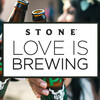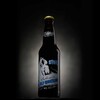In 2019, we partnered with the American Homebrewers Association (AHA) to host a people’s choice homebrew competition at our Richmond, Virginia brewing facility. The clear favorite and winner of the competition was a creamy, hoppy, tropical creation from Richmond native Rusty Burrell of @rustybarrelhomebrewing. Over the years, these competitions (which we’ve hosted as far back as 2009) have…
Life can feel like a dream when you get to wake up every morning and brew beer. When our brewer Steve Gonzalez and Seismic Brewing’s Andy Hooper decided to talk collabs, it was actually quite simple. “What are you into lately?” “India Pale Lagers.” “How about a red IPL?” “Never had one before. Let’s do it!” And thus, Seismic / Stone Ain’t That A Kick In The Red Imperial IPL…
It's been more than nine years since we opened our doors at Stone Brewing World Bistro & Gardens - Liberty Station & started brewing. Since then, multiple beers originating here went on to become national releases and even year-round mainstays. (A few also won some GABF medals, multiple times, but who's counting?) This double-dry-hopped black IPA from Liberty Station brewer Kris Ketcham…
Hello, lovers of minty confections. Glad tidings, enjoyers of dark chocolate. This one's for you and your refined palate. Brewers (and peppermint bark enthusiasts) Eric Fallon and Alfonso Servey created this recipe on our small batch system last winter, based on a homebrew that utilized bark from that well-known grocer where the clerks wear Hawaiian shirts. You know the one. The chocolate &…
When you venture down the rabbit hole, things aren’t always what they seem. While this strange and beautiful stout is deceptively light in color, it’s packed with more flavor than seems fathomable to fit inside this 16oz can. Our Innovation Brewer Fritzi Lara Lino concocted this creation along with our Small Batch team using coffee, chocolate, strawberry… and mushrooms. Trust us. Will it make you…
Thinking about tying the knot at Stone? Already planning on it? Experience the magic of our Gardens transformed into a wedding venue. Enjoy a stroll the gardens, sample from our special event menu and meet some of our preferred vendors. No tickets necessary – just RSVP and join us!
Let us handle the cooking and treat the amazing mothers in your life to an epic Sunday buffet-style brunch. With a menu this massive, there’s something for every mom.
The relationship between good drink and social spirit is clear to just about anyone who has ever attended a worthwhile gathering. Whether at a casual picnic or a formal banquet, the good host knows the irreplaceable value of libation in bringing people closer together. Perhaps less obvious, but no less important, is the role that togetherness plays with creating our favorite of all amenities:…
“Bittersweet” is a good way to describe the feedback we’ve received from our fans over the last year and a half since the release of 2007’s Stone 11th Anniversary Ale. Bittersweet. Yeah, that pretty much sums it up. The term is quite descriptive of the beer itself, of course, as it aptly describes the flavors of the esteemed big…



